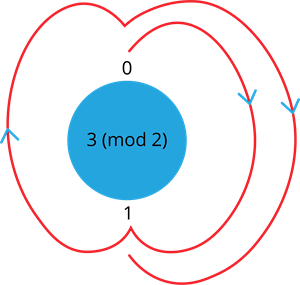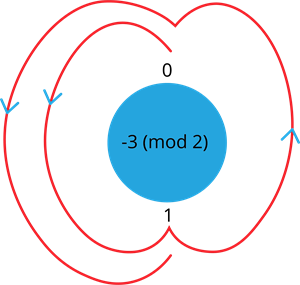
PUMPA - SMART LEARNING
எங்கள் ஆசிரியர்களுடன் 1-ஆன்-1 ஆலோசனை நேரத்தைப் பெறுங்கள். டாப்பர் ஆவதற்கு நாங்கள் பயிற்சி அளிப்போம்
Book Free DemoTwo integers, a and b, are said to be congruent modulo n if and only if their difference is divisible by n. It can be written as
a \equiv b (mod \ n)
In other words, the two integers, a and b, is the difference of the integer multiple of congruence modulo n. That is, b - a = kn for some integer k.
Here, n is called the modulus of the congruence.
Example:
39 \equiv 4 (mod \ 5). Here, 5 is the modulus of the congruence because 39 - 4 = 35 is divisible by 5.
Consider the following examples on how to find the congruence modulo.
Example:
1. Find 3 (mod \ 2)
Solution:

Consider the possible remainders for the number with mod 2 are 0, 1.
To find the remainder of the given number, start at 0 and go through 3 numbers in a clockwise direction. The 3 numbers would go in a cycle starting from 0. They are 1, 0, 1. Since the cycle ends at the remainder of 1, the answer for 3 (mod \ 2) is 1.
Therefore, 3 \equiv 1 (mod \ 2)
2. Find -3 (mod \ 2)
Solution:

Consider the possible remainders for the number with mod 2 are 0, 1.
To find the remainder of the given number, start at 0 and go through 3 numbers in a anticlockwise direction(because the number has a negative sign). The 3 numbers would go in a cycle starting from 0. They are 1, 0, 1. Since the cycle ends at the remainder of 1, the answer for -3 (mod \ 2) is 1.
Therefore, -3 \equiv 1 (mod \ 2)